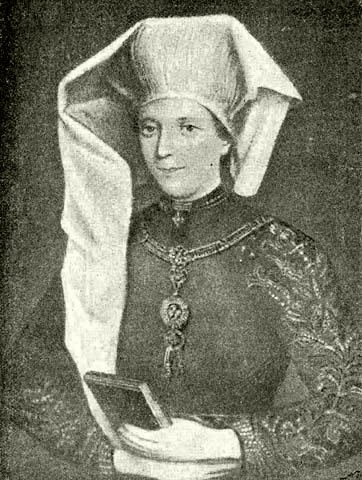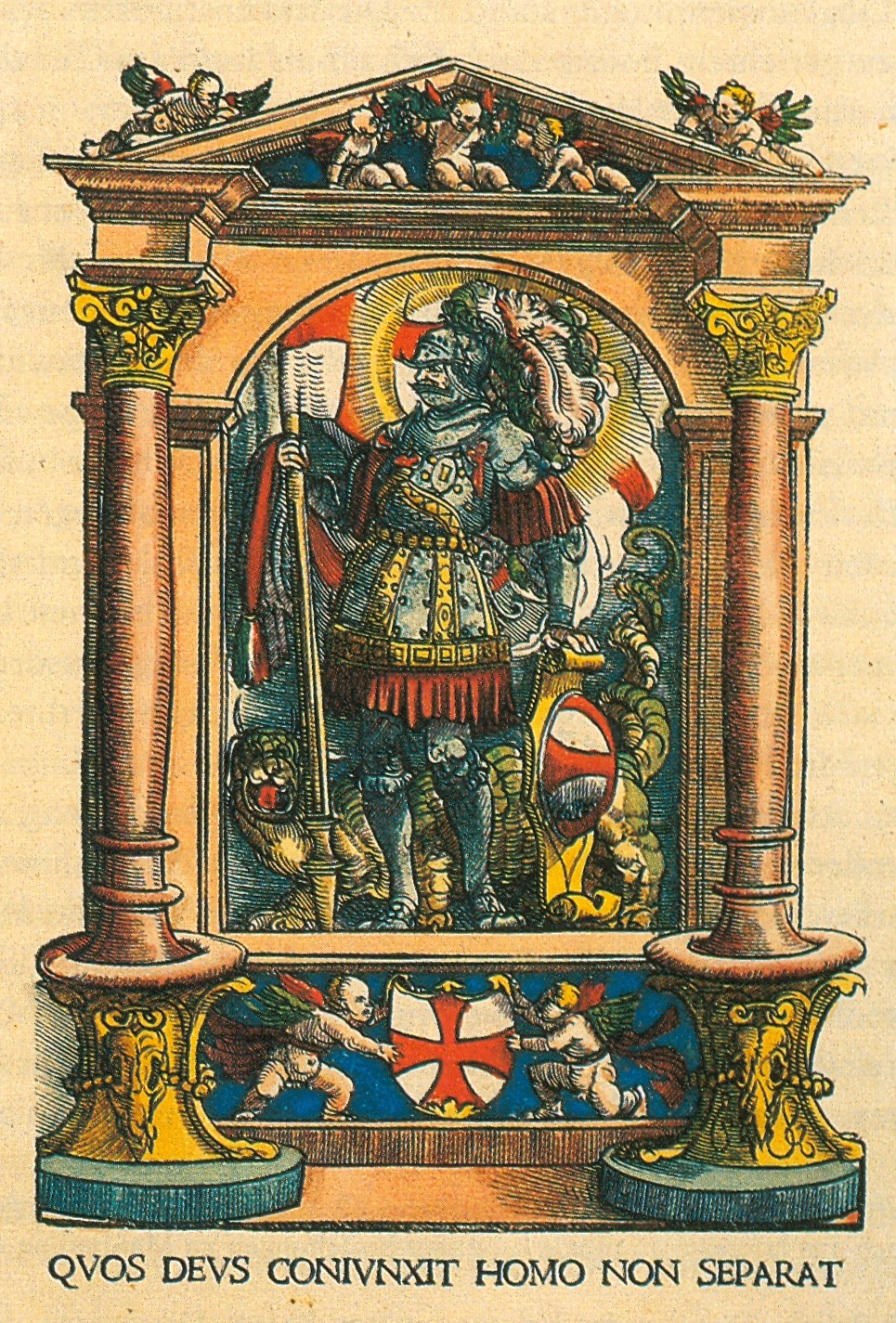|
Casimir, Margrave Of Brandenburg-Bayreuth
Casimir (or Kasimir) of Brandenburg-Bayreuth (27 December 1481 – 21 September 1527) was Margrave of Bayreuth or Margrave of Brandenburg-Kulmbach from 1515 to 1527. Life Family background Casimir was born in Ansbach, as the son of Frederick I, Margrave of Brandenburg-Ansbach and his wife Princess Sofia Jagiellon, a daughter of King Casimir IV Jagiellon of Poland. From 1498, Casimir's father Frederick granted him the position of stadtholder of the margraviate during his extensive travels. He ruled under the guidance of experienced advisors. In 1515, Casimir and his younger brother George deposed their father, who had greatly burdened the finances of the margraviate with his lavish lifestyle. Casimir then locked up his father at his residence at Plassenburg Castle, in a tower room from which his father could not escape for 12 years. He took up the rule of the Margraviate of Brandenburg-Kulmbach while his brother George ruled the Margraviate of Brandenburg-Ansbach. Howeve ... [...More Info...] [...Related Items...] OR: [Wikipedia] [Google] [Baidu] |
Hans Von Kulmbach
Hans Suess, known as Hans von Kulmbach, was a German artist. He was born around 1480 in Kulmbach, Franconia and died prior to 3 December 1522 in Nuremberg.John Denison Champlin, Charles CallahanCyclopedia of Painters and PaintingsNew York, Publisher: Charles Scribner's Sons. Page 414 Hans von Kulmbach was the artist who created the Kraków St John's Altar. Life Kulmbach probably arrived in Nuremberg around 1505. He received instruction by Jacopo de' Barbari, who for a time worked in Nuremberg. Von Kulmbach then apprenticed with Albrecht Dürer and after Dürer retired from painting altarpieces in 1510 Kulmbach took over most of his commissions. Kulmbach had his own workshop in Nuremberg and at times worked in Kraków. He also created artworks for emperor Maximilian I and for Margrave Casimir Hohenzollern von Brandenburg-Kulmbach. His best works were stained-glass windows in churches, such as the Maximilian stained-glass, Margrave stained-glass at St. Sebald in Nuremberg, the ... [...More Info...] [...Related Items...] OR: [Wikipedia] [Google] [Baidu] |
George, Margrave Of Brandenburg-Ansbach
George of Brandenburg-Ansbach (German: ''Georg''; 4 March 1484 – 27 December 1543), known as George the Pious (''Georg der Fromme''), was a Margrave of Brandenburg-Ansbach from the House of Hohenzollern. Biography Early life He was born in Ansbach, the second of eight sons of Margrave Frederick the Elder and his wife Sophia of Poland, daughter of Casimir IV of Poland and Elisabeth of Habsburg. Through his mother, he was related to the royal court in Buda. He entered the service of his uncle, King Vladislaus II of Bohemia and Hungary, living at his court from 1506. The king received him as an adopted son, entrusted him in 1515 with the Duchy of Oppeln, and in 1516 made him member of the tutelary government instituted for Hungary, and tutor of his son Louis II of Hungary and Bohemia Louis II ( cs, Ludvík, hr, Ludovik , hu, Lajos, sk, Ľudovít; 1 July 1506 – 29 August 1526) was King of Hungary, Croatia and Bohemia from 1516 to 1526. He was killed during the ... [...More Info...] [...Related Items...] OR: [Wikipedia] [Google] [Baidu] |
Swabian League
The Swabian League (''Schwäbischer Bund'') was a mutual defence and peace keeping association of Imperial State, Imperial Estates – free Imperial cities, prelates, principalities and knights – principally in the territory of the early medieval stem duchy of Duchy of Swabia, Swabia established on 14 February 1488. The religious revolution of the Protestant Reformation divided its members, and the Swabian League disbanded in 1534. History The Swabian League was established in 1488 at the behest of Emperor Frederick III, Holy Roman Emperor, Frederick III of Habsburg and supported as well by Bertold von Henneberg-Römhild, Bertold von Henneberg-Römhild, archbishop of Mainz, whose conciliar rather than monarchic view of the ''Reich'' often put him at odds with Frederick's successor Maximilian I, Holy Roman Emperor, Maximilian. The Swabian League cooperated towards the keeping of the imperial peace and at least in the beginning curbing the expansionist History of Bavaria, Bavaria ... [...More Info...] [...Related Items...] OR: [Wikipedia] [Google] [Baidu] |
Baden
Baden (; ) is a historical territory in South Germany, in earlier times on both sides of the Upper Rhine but since the Napoleonic Wars only East of the Rhine. History The margraves of Baden originated from the House of Zähringen. Baden is named after the margraves' residence, in Baden-Baden. Hermann II of Baden first claimed the title of Margrave of Baden in 1112. A united Margraviate of Baden existed from this time until 1535, when it was split into the two Margraviates of Baden-Durlach and Baden-Baden. Following a devastating fire in Baden-Baden in 1689, the capital was moved to Rastatt. The two parts were reunited in 1771 under Margrave Charles Frederick. The restored Margraviate with its capital Karlsruhe was elevated to the status of electorate in 1803. In 1806, the Electorate of Baden, receiving territorial additions, became the Grand Duchy of Baden. The Grand Duchy of Baden was a state within the German Confederation until 1866 and the German Empire until 1918, ... [...More Info...] [...Related Items...] OR: [Wikipedia] [Google] [Baidu] |



